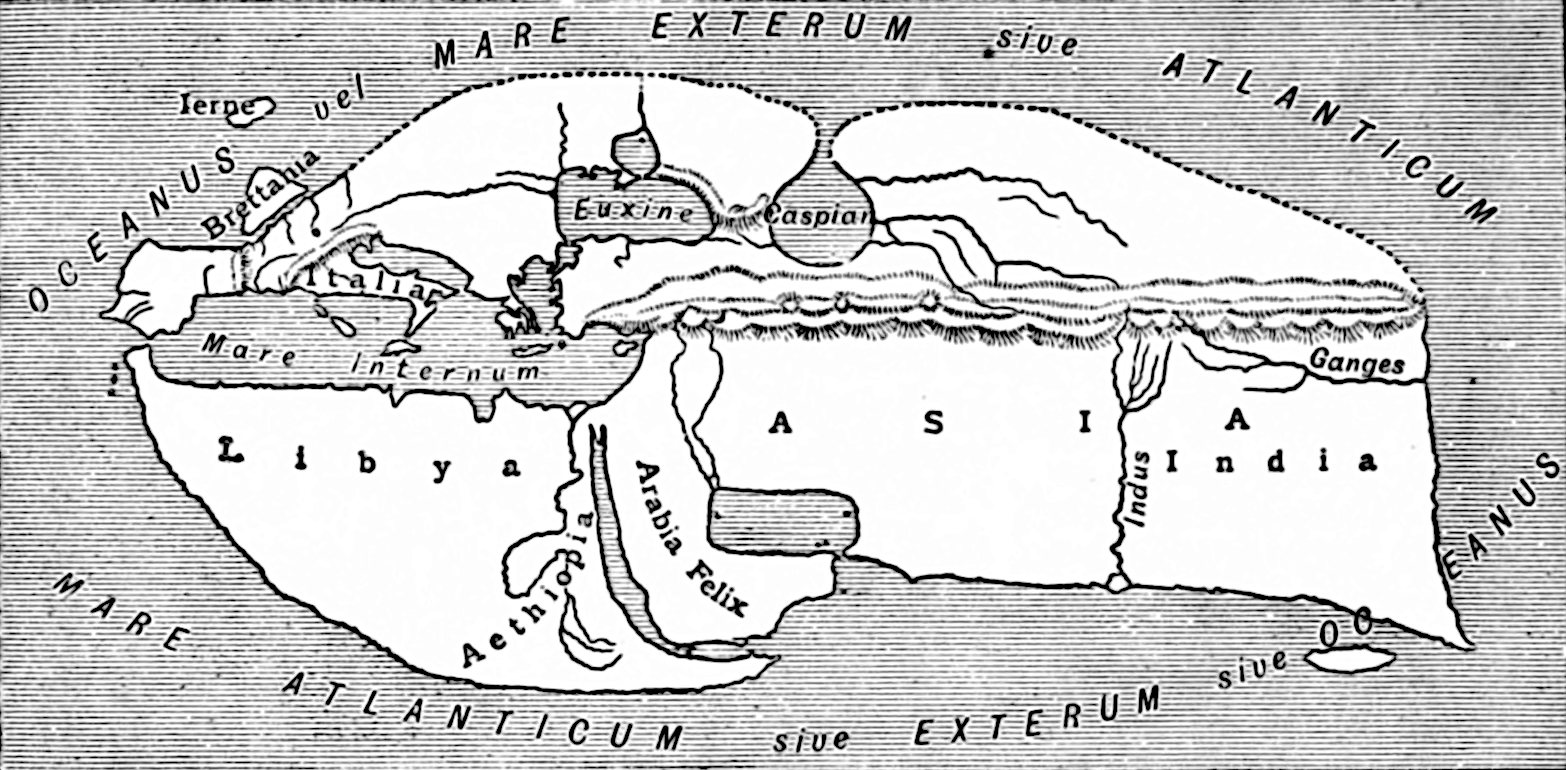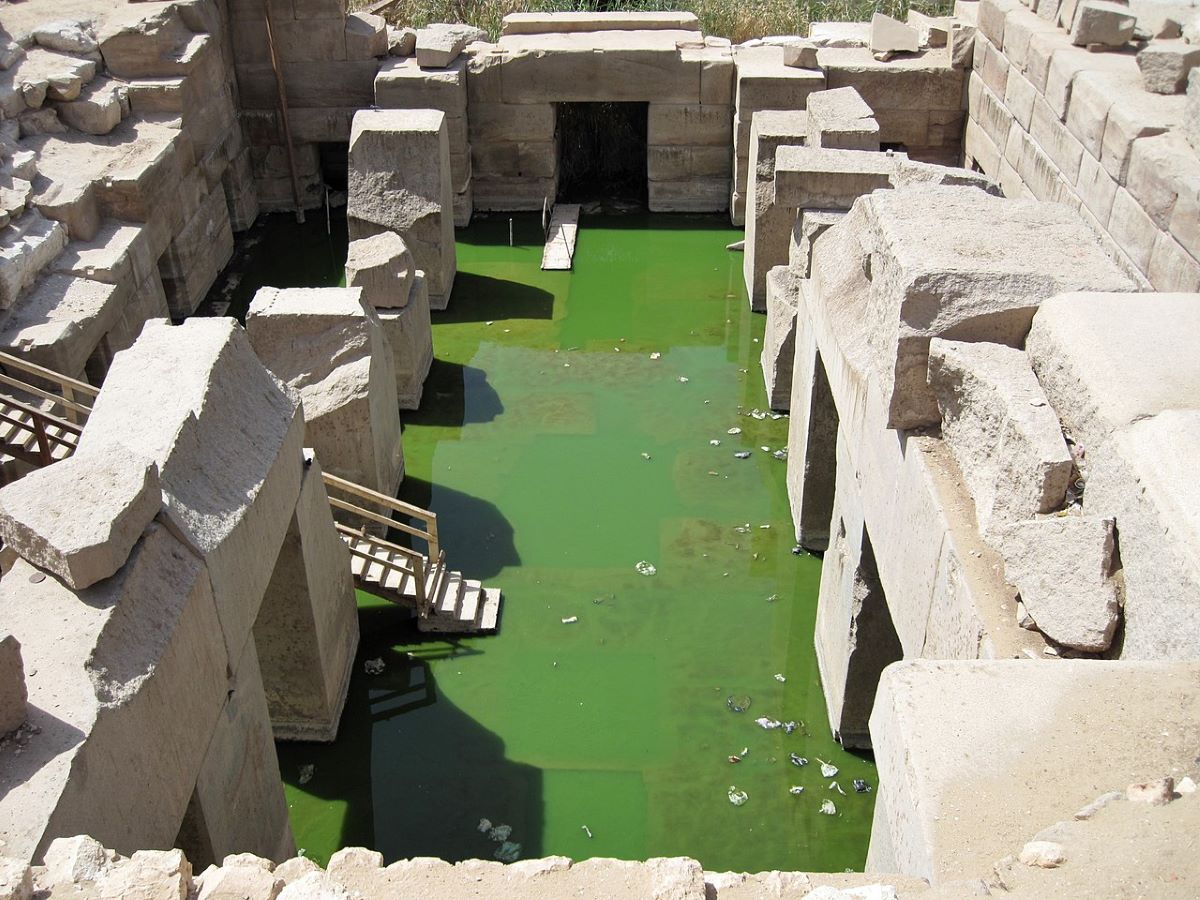
The ancient Greek geographer Strabo is one of the greatest writers of the ancient world, devoting his life to studying, writing, and traveling. He left behind a substantial body of work.
Strabo (or Stravon, Στράβων in Greek, 64 or 63 BC – c. 24 AD) was also a historian and philosopher who was born to an affluent family involved in politics in Amaseia of Pontus, located in Asia Minor.
His book, Geography (original Greek title Γεωγραφικά, Geographica), is a magnificent record in seventeen volumes of all the peoples and countries known to ancient Greeks and Romans of his time. The book has been preserved to this day.
Strabo’s descriptions of landscapes, natural phenomena, peoples, cultures, and historical events are meticulous and often vivid. Geography is a crucial source of information on the ancient world.

Education and First Books
Strabo’s family members had served Mithridates the Great in the war against Rome. However, his grandfather had turned several Pontic fortresses over to the Romans, thus acquiring certain privileges from them.
His first tutor was Aristodemus, and when he moved to Rome in 44 BC, he studied under Tyrannion, the former tutor of Cicero, and Xenarchus, both of whom were members of the Aristotelian school of philosophy.
It was in Rome that the ancient Greek geographer wrote his first major work, the 47-volume Historical Sketches, published around 20 BC. Only a few quotations from the books have survived, but they covered the history of the known world, beginning in 145 BC, when Rome conquered Greece, to the Battle of Actium in 31 BC—or the beginnings of the principate of Roman Emperor Augustus (27 BC).
Continuous Travels
Strabo spent a substantial part of his life traveling. He traveled as far East as Kush, a mountainous area that covered parts of modern day Iran and Afghanistan and as far South as Egypt and Ethiopia. Likewise, he traveled widely throughout the Mediterranean and the Near East to study and map out the regions.
In 29 BC, on his way to Corinth, he visited the island of Gyaros in the Aegean Sea. Around 25 BC, he sailed up the Nile until he reached Philae.
In the first century BC, Strabo traveled to Osireion in Egypt and wrote a description of the place. Archaeologists Margaret Murray and Flinders Petrie found the Osireion while excavating the site in 1902–03. As a result, modern excavators named the underground water basin at the Osireion “Strabo’s Well,” citing the ancient geographer who “guided” them in discovering it.

In regards to places to which he could not travel, the ancient Greek geographer wrote about Gaul, England, Ireland, Iberia, Maurousia (Mauretania), and Danube, using as sources Polybius and Posidonius. On writing about Greece, he used Apollodorus of Athens and Demetrius of Scepsis.
For descriptions of India and Persia, he received information on the campaigns of Alexander the Great (356 to 323 BC) from historians. For Mesopotamia, Syria, Palestine, and the Red Sea, Strabo relied on the accounts of the expeditions sent out by Mark Antony and the Emperor Augustus. Strabo’s own memories of Egypt were supplemented by writings of Posidonius and Artemidorus.
When did Strabo Write Geography?
It is unknown when exactly Strabo wrote Geography. Some date its first drafts around 7 BC while others believe they were written around 17 or 18 AD. His reference to the death of Juba II, king of Maurousia (Mauretania) in 23 AD is believed to be his last passage.
The ancient Greek wrote an important, informative chronicle which consists of political, economic, social, cultural, and geographic descriptions covering almost all of Europe and the Mediterranean. This includes Britain and Ireland, the Iberian Peninsula, Gaul, Germania, the Alps, Italy, Greece, the Northern Black Sea region, Anatolia, the Middle East, Central Asia, and North Africa.
The fact that Geography has survived and provided crucial data on the history of Europe of that time period made it easier for historians to connect with previous and later data and gain valuable insight on life at the turn of a millennium.
Geography Excerpt
The language used by Strabo was descriptive and precise. Below is an excerpt of ancient Greek geographer Strabo on Roman Britain from Geography, Book IV, Chapter 5:
Britain is triangular in shape; and its longest side stretches parallel to Celtica, neither exceeding nor falling short of the length of Celtica; for each of the two lengths is about four thousand three hundred—or four hundred—stadia: the Celtic length that extends from the outlets of the Rhenus as far as those northern ends of the Pyrenees that are near Aquitania, as also the length that extends from Cantium (which is directly opposite the outlets of the Rhenus), the most easterly point of Britain, as far as that westerly end of the island which lies opposite the Aquitanian Pyrenees. This, of course, is the shortest distance from the Pyrenees to the Rhenus, since, as I have already said, the greatest distance is as much as five thousand stadia; yet it is reasonable to suppose that there is a convergence from the parallel position which the river and the mountains occupy with reference to each other, since at the ends where they approach the ocean there is a curve in both of them.
See all the latest news from Greece and the world at Greekreporter.com. Contact our newsroom to report an update or send your story, photos and videos. Follow GR on Google News and subscribe here to our daily email!



